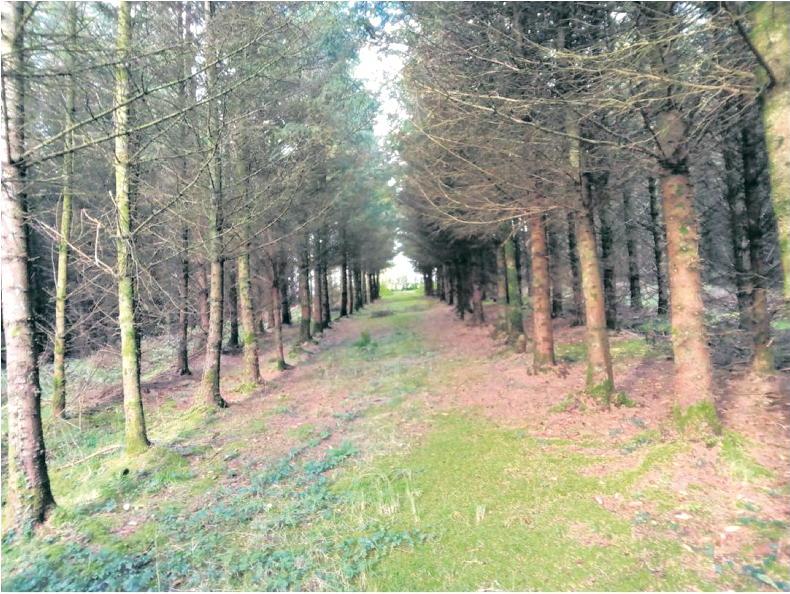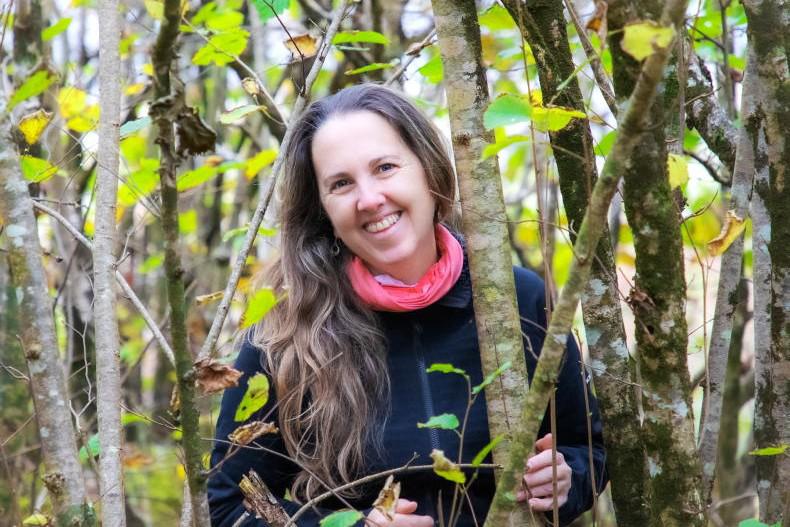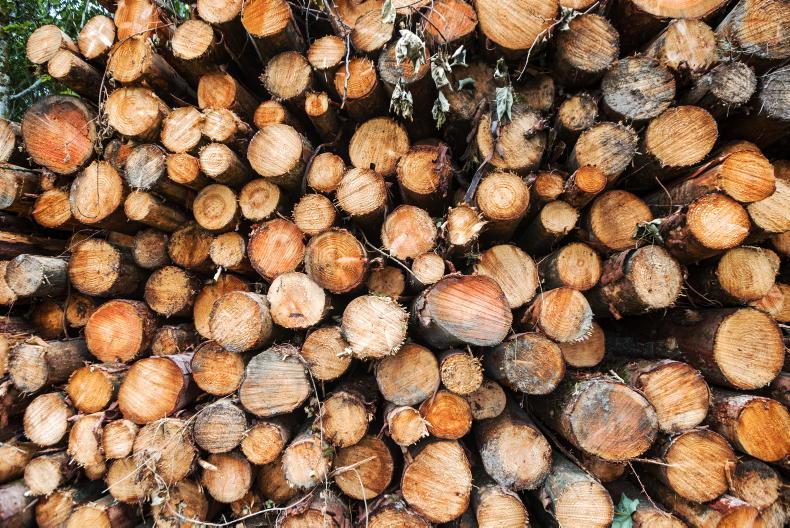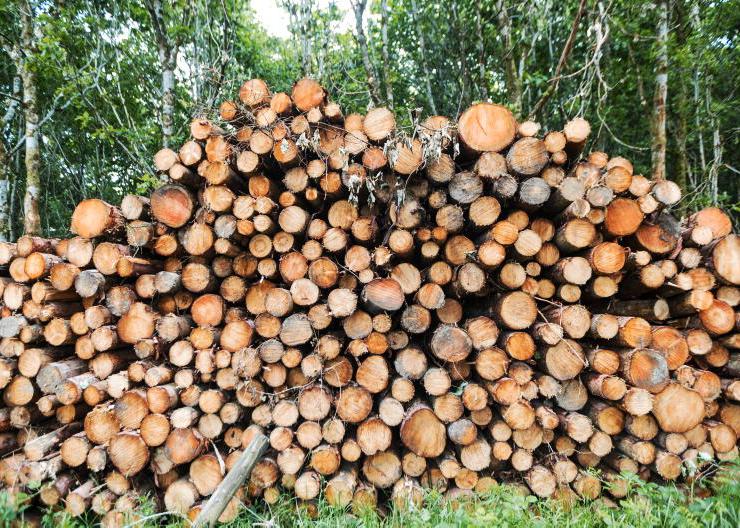In a submission to all Oireachtas members, a group representing nursery and forestry companies claims that “compared with all other land-based scenarios, trees are essential for Ireland's climate goals, far exceeding livestock reductions or rewetting alone”.
The Social, Economic, Environmental Forestry Association of Ireland (SEEFA) document states that action is needed now to ensure Ireland delivers on the 2021 Climate Action Plan, which recognises “afforestation is the single largest land-based climate change mitigation measure available to Ireland”.
SEEFA has engaged Professor Cathal O’Donoghue, chair of Social and Public Policy at NUI Galway to prepare an economic report on the forestry sector and make suitable recommendations for its development.
Professor O’Donoghue, the former head of the Rural Economy and Development Programme in Teagasc, will publish the full report at the end of the month.
“The report’s initial findings are strong on the climate change benefits of forestry,” says Teige Ryan, chair of SEEFA.
“The association's submission includes some of Professor Donoghue's findings, which outline how a viable afforestation programme would have mitigated the emissions from dairy expansion since 2010.”
Since then, the number of livestock units has increased by 386,000.
“On average, each hectare of forest sequesters the equivalent emissions from 3.8 livestock units,” the report claims.
“Based on this data, 102,000ha of new forests would have mitigated the emission from dairy expansion in forestry,” Ryan explains.
“The report states that to significantly offset greenhouse gas (GHG) emissions, forestry policy should pay farmers now to increase planting. The immediacy of an increase in afforestation is necessary to develop high-value, bio-based industries over the next 10 to 40 years, which will require additional harvested wood.
The report’s initial findings are strong on the climate change benefits of forestry
“The report outlines how increased planting not only sequesters carbon in the forest, but provides multiple future opportunities, including decarbonisation in construction and further advances in the role of wood in the bioeconomy.”
Because of continuous low planting since 2005, the report maintains that an annual afforestation programme of 20,000ha is now required to achieve climate targets, including the development of “carbon neutral dairy expansion” according to Ryan.
“As the current annual programme is just over 2,000ha, SEEFA feels it is necessary to outline the enormity of the challenge to members of the Oireachtas,” he says. The document submitted includes the following proposals:
The development of a forestry programme which will deliver for the industry and for climate change.Full implementation of the Mackinnon report in a defined timeframe.
Full integration of afforestation and other tree planting schemes into CAP.
A complete redesign of the forestry programme 2023-2027, including enhanced forestry premiums for farmers and realistic compensation for forest owners impacted by ash dieback to restore confidence in planting.
Increased afforestation incentives that are competitive with other farm subsidies and schemes.
Establishment of a highly focused and resourced independent agency to drive the forestry programme.
“We will present our ‘Economic Report on the Forestry Sector’ to the Department later in the month and expect to be actively consulted on its findings and our proposals for the next forestry programme, which needs to re-invigorate the sector,” says Ryan.
“The current programme needs a complete redesign if we are to achieve a viable afforestation programme, which according to the Department's own policy, is to achieve 18% forest cover by 2046,” he adds.
“This is consistent with achieving carbon neutral agriculture and land use by 2050, so this is really a crucial time for the sector.
“Marie Donnelly, chair of the Climate Change Advisory Council, summed up forestry's current predicament last January when she said ‘we are in a serious hole on forest planting’.”
When asked if increasing the annual afforestation programme from 2,000ha at present to 20,000ha was unrealistic given the current performance, Ryan says it is achievable but admits it will require a major change in Government thinking.
“Central to this change would be the establishment of an independent State forestry development agency, because existing Department structures will not deliver on these ambitious afforestation targets,” he says.
Details of RDS forestry awards announced

Norway spruce and Japanese larch in Patrick J O’Reilly's forest near Belturbet, Co Cavan. Mr O'Reilly has been both an outright winner and runner-up of the RDS Production Forestry Category Award. \Henry Phillips
The RDS has announced the 2022-2023 Irish Forest and Woodland Awards. Entries are now accepted for the following three award categories;
Production forestry. Teagasc farm forestry.
Community woodlands.
There is a total prize fund of €9,000, including €2,000 for each category winner and €1,000 for runners-up. In addition, category winners will receive specially commissioned trophies, while each runner-up will receive an RDS Certificate of Merit.
Supported by the Department of Agriculture, Food and the Marine, the award winners will be announced at the 2023 RDS Spring Agriculture and Forestry Awards ceremony, which will take place in the RDS Concert Hall next May.
The RDS says everyone with woodland is encouraged to enter, “as all woodlands, large or small, are of merit”. Judges will have the option to visit all short-listed entries over the coming months.
Application forms are available to download at www.rds.ie/agriculture/forestry or by emailing Forestry@rds.ie. Those interested in seeking additional information can also contact Isabelle Sweeney, Agriculture and Enterprise Foundation administrator by email (isabelle@rds.ie) or phone (01 240 7206 or 085 775 6774). The closing date for entries is July 31 2022.
In a submission to all Oireachtas members, a group representing nursery and forestry companies claims that “compared with all other land-based scenarios, trees are essential for Ireland's climate goals, far exceeding livestock reductions or rewetting alone”.
The Social, Economic, Environmental Forestry Association of Ireland (SEEFA) document states that action is needed now to ensure Ireland delivers on the 2021 Climate Action Plan, which recognises “afforestation is the single largest land-based climate change mitigation measure available to Ireland”.
SEEFA has engaged Professor Cathal O’Donoghue, chair of Social and Public Policy at NUI Galway to prepare an economic report on the forestry sector and make suitable recommendations for its development.
Professor O’Donoghue, the former head of the Rural Economy and Development Programme in Teagasc, will publish the full report at the end of the month.
“The report’s initial findings are strong on the climate change benefits of forestry,” says Teige Ryan, chair of SEEFA.
“The association's submission includes some of Professor Donoghue's findings, which outline how a viable afforestation programme would have mitigated the emissions from dairy expansion since 2010.”
Since then, the number of livestock units has increased by 386,000.
“On average, each hectare of forest sequesters the equivalent emissions from 3.8 livestock units,” the report claims.
“Based on this data, 102,000ha of new forests would have mitigated the emission from dairy expansion in forestry,” Ryan explains.
“The report states that to significantly offset greenhouse gas (GHG) emissions, forestry policy should pay farmers now to increase planting. The immediacy of an increase in afforestation is necessary to develop high-value, bio-based industries over the next 10 to 40 years, which will require additional harvested wood.
The report’s initial findings are strong on the climate change benefits of forestry
“The report outlines how increased planting not only sequesters carbon in the forest, but provides multiple future opportunities, including decarbonisation in construction and further advances in the role of wood in the bioeconomy.”
Because of continuous low planting since 2005, the report maintains that an annual afforestation programme of 20,000ha is now required to achieve climate targets, including the development of “carbon neutral dairy expansion” according to Ryan.
“As the current annual programme is just over 2,000ha, SEEFA feels it is necessary to outline the enormity of the challenge to members of the Oireachtas,” he says. The document submitted includes the following proposals:
The development of a forestry programme which will deliver for the industry and for climate change.Full implementation of the Mackinnon report in a defined timeframe.
Full integration of afforestation and other tree planting schemes into CAP.
A complete redesign of the forestry programme 2023-2027, including enhanced forestry premiums for farmers and realistic compensation for forest owners impacted by ash dieback to restore confidence in planting.
Increased afforestation incentives that are competitive with other farm subsidies and schemes.
Establishment of a highly focused and resourced independent agency to drive the forestry programme.
“We will present our ‘Economic Report on the Forestry Sector’ to the Department later in the month and expect to be actively consulted on its findings and our proposals for the next forestry programme, which needs to re-invigorate the sector,” says Ryan.
“The current programme needs a complete redesign if we are to achieve a viable afforestation programme, which according to the Department's own policy, is to achieve 18% forest cover by 2046,” he adds.
“This is consistent with achieving carbon neutral agriculture and land use by 2050, so this is really a crucial time for the sector.
“Marie Donnelly, chair of the Climate Change Advisory Council, summed up forestry's current predicament last January when she said ‘we are in a serious hole on forest planting’.”
When asked if increasing the annual afforestation programme from 2,000ha at present to 20,000ha was unrealistic given the current performance, Ryan says it is achievable but admits it will require a major change in Government thinking.
“Central to this change would be the establishment of an independent State forestry development agency, because existing Department structures will not deliver on these ambitious afforestation targets,” he says.
Details of RDS forestry awards announced

Norway spruce and Japanese larch in Patrick J O’Reilly's forest near Belturbet, Co Cavan. Mr O'Reilly has been both an outright winner and runner-up of the RDS Production Forestry Category Award. \Henry Phillips
The RDS has announced the 2022-2023 Irish Forest and Woodland Awards. Entries are now accepted for the following three award categories;
Production forestry. Teagasc farm forestry.
Community woodlands.
There is a total prize fund of €9,000, including €2,000 for each category winner and €1,000 for runners-up. In addition, category winners will receive specially commissioned trophies, while each runner-up will receive an RDS Certificate of Merit.
Supported by the Department of Agriculture, Food and the Marine, the award winners will be announced at the 2023 RDS Spring Agriculture and Forestry Awards ceremony, which will take place in the RDS Concert Hall next May.
The RDS says everyone with woodland is encouraged to enter, “as all woodlands, large or small, are of merit”. Judges will have the option to visit all short-listed entries over the coming months.
Application forms are available to download at www.rds.ie/agriculture/forestry or by emailing Forestry@rds.ie. Those interested in seeking additional information can also contact Isabelle Sweeney, Agriculture and Enterprise Foundation administrator by email (isabelle@rds.ie) or phone (01 240 7206 or 085 775 6774). The closing date for entries is July 31 2022.











SHARING OPTIONS